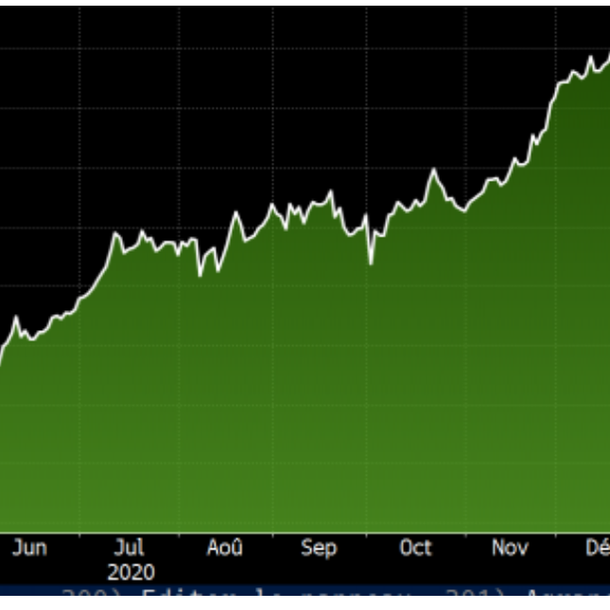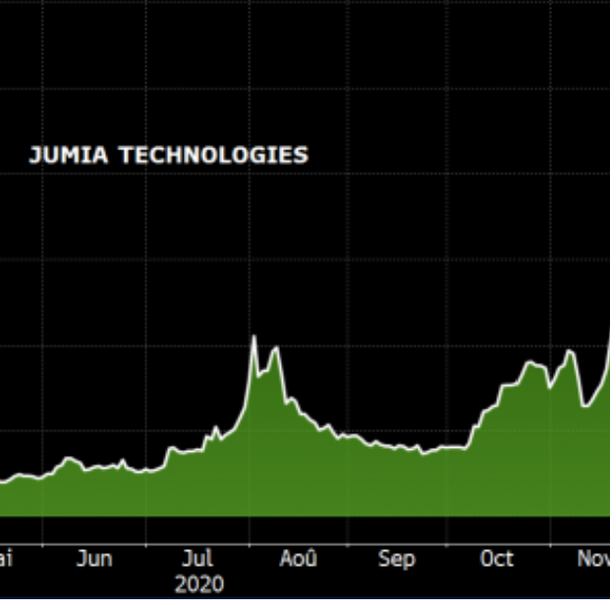|
Monday February 1 | Weekly market update |
 |
Fears about vaccine production and delivery and the generally poorly received quarterly results have led to a release of funds on financial markets last week. These releases coincide with a return of volatility, fueled by the "revolt" of individual shareholders against certain bear funds, a remarkable episode that was widely covered, even in the general press. As the Federal Reserve stressed at its last meeting, the slowdown in the current recovery and the risks of new health restrictions call for caution. |
| Indexes All major indices have lost ground. In Asia, the Shanghai Composite recorded a weekly loss of 2.8%, the Nikkei by 3.4% and the Hang Seng by 3.7%. In Europe, the declines appeared less significant for the major indices. The CAC40 dropped 2%, the Dax 2.2% but the Footsie 3.6%. In the peripheral countries of the euro zone, Portugal dropped 4.3%, Spain 3% and Italy 1.6%. In the US, the Dow Jones fell by about 1.9% over the week, the S&P500 also lost 1.9% and the Nasdaq100 1.8%. |
| Commodities Weeks follow one another and remain similar on oil markets, with a new weekly sequence of horizontal consolidation. Prices have been moving flat since January 10, suggesting that operators don't really know where to start. The level of demand remains at the center of concerns, with investors relegating the fall in weekly inventories in the United States to second place. Brent is trading at $55, compared to $52.3 for the U.S. benchmark. Gold and silver, on the other hand, are recovering. Stimulated by increased volatility on equity markets, gold returned to its highest level of the month, close to USD 1,870, as did silver at USD 27.5. Copper, and more generally the base metals compartment, fell back under the effect of some profit-taking, quite legitimate after the excellent performance of the last few months. Copper is back under USD 8000, aluminum is trading at USD 1979 USD and nickel is breathing at USD 17600. Copper maintains its bullish trajectory  |
| Equities markets Focus this week is on Africa with Jumia Technologies, the first African technology company listed on Wall Street. This new player in online commerce, present mainly on the emerging continent, was founded in Germany by French executives. The company still retains an African flavor with a South African lead investor. It is often compared to Amazon or Alibaba: indeed, it offers an online platform to connect sellers and buyers and ship packages in continental countries, especially those with the best rates of Internet users, such as the Maghreb countries, South Africa, Ivory Coast or Senegal. Overall, the proportion of African population with Internet access is very low, at 39% in 2020 against a world average of 59%. Any improvement in this area could lead to strong growth in the long term, especially since the penetration rate of online commerce is extremely low, barely 3%. The year 2020 was a rather surprising year for this digital company. Unlike other giants who took advantage of the health situation to see their growth skyrocket, Jumia saw its turnover drop by 15%, as Africa was less affected by the virus. Nevertheless, the company is on the road to profitability: EBITDA went from -181 M€ to -123 M€, a 30% decrease in losses and NBI from -3.22€ to -1.79€. In particular, Jumia was able to reduce its marketing spend by 55% in the third quarter. This is a fairly typical path for the industry: Amazon took years to become profitable. According to analysts, Jumia's revenue should jump in the coming years, 32% in 2021 and 34% the following year, while continuing to approach the break-even point. Graphically, the share has risen 39% since the beginning of the year to close to $60, thanks in particular to the comment of one of its former critics, Citron Research, which is aiming for $100 by the end of the year. Evolution of the Jumia Technologies share price  |
| Bond market Despite political tensions in Italy, European spreads have held steady over the past week. The bund produced a return of -0.54%, while the Italian ten-year yield returned to a level of 0.65%. The Italian debt managers were even very active on the primary market, looking for takers for 5 and 10-year bonds for 7 billion euros. The French OAT stabilized at -0.28%, as did all the sovereign securities of Southern Europe, such as Portugal and Spain, which saw their respective debt generate interest close to zero. In the United States, Treasury yields are falling as a series of bad news has sent investors to the safe haven of US government bonds. Thanks to their new inflation target, the US monetary authorities now have much more leeway to maintain their ultra-accommodating policy stance. The Tbond is evolving slightly, with a yield of 1.04%, after a recent peak of 1.15%. |
| Forex market Despite an intervention by the Fed with a bias that is still dovish, the greenback remains well oriented in the short term, thus validating its technical recovery phase. It is trading against the euro at 1.2077 USD. The major parity continues, therefore, its path towards the 1.20 USD. In Europe, the resignation of Italian Prime Minister Conte has had little effect on the euro. The resilience of the single currency is intensifying despite the ECB's willingness to monitor overvaluation. Across the Channel, the pound sterling remained bullish, with a new three-year peak against the dollar at USD 1.37. The pound sterling's strength was also strong against the US dollar. The upward trend can also be seen in the currencies of the antipodes (AUD and NLZ), which are taking advantage of Chinese traction and an optimistic environment to appreciate (see chart). Australian and New Zealand dollars trending upwards  |
| Economic data European statistics were few last week and largely focused on Germany. The IFO disappointed (90.1 vs. 91.5 expected) and import prices rose only 0.6% (consensus 1%). On the other hand, the CPI index rose more than expected by 0.8% and GDP by 0.1% (8.5% the previous quarter). For France, consumer spending rose by 23% (-18% previously) while the GDP fell by 1.3% when it was expected at -4%. In the United States, the data was mixed. Durable goods orders were up only 0.2%, the Richmond manufacturing index was up to 14 (consensus 18), new home sales were up to 842K from an expected 860K, and GDP was up 4% in Q4 (consensus 4.2% and 33.4% in Q3). The Conference Board index rose to 89.3, weekly unemployment registrations fell to 847K while household spending and income exceeded expectations at -0.2% and +0.6% respectively. |
| Confusion replaces conviction Markets are going through a historic phase and the very recent "revolt" of small investors against hedge funds, in certain cases, gives this environment a little more prominence. In a context of uncertainty, orchestrated by the health crisis, conviction is giving way to confusion. Indices are suffering from defaults, creating volatility but without panic on the part of investors who think they have certain guarantees. Anxiety across markets is accompanied by central bank intervention. This unlimited benevolence allows them - in these times of strong recession - to limit business failures and strengthen household savings. |

 By
By 










